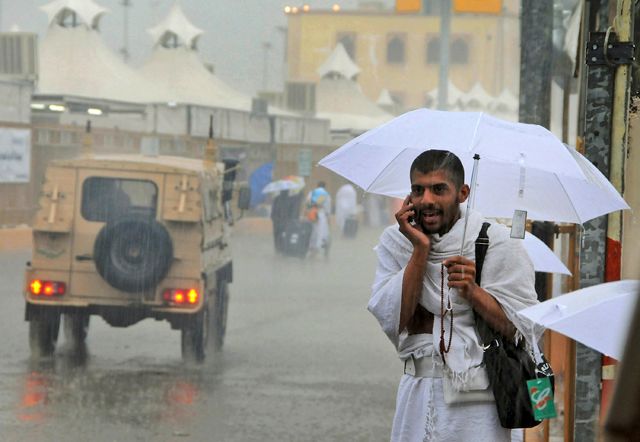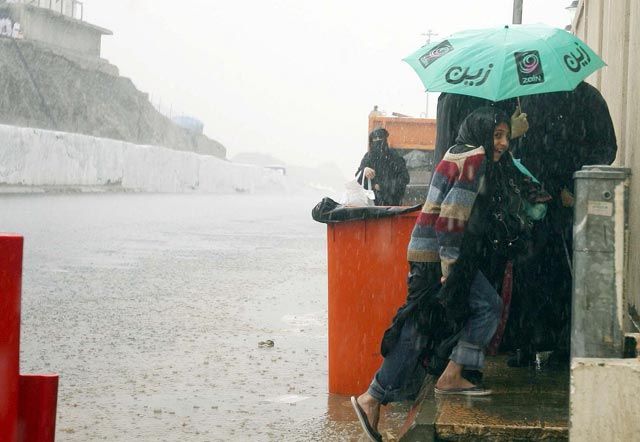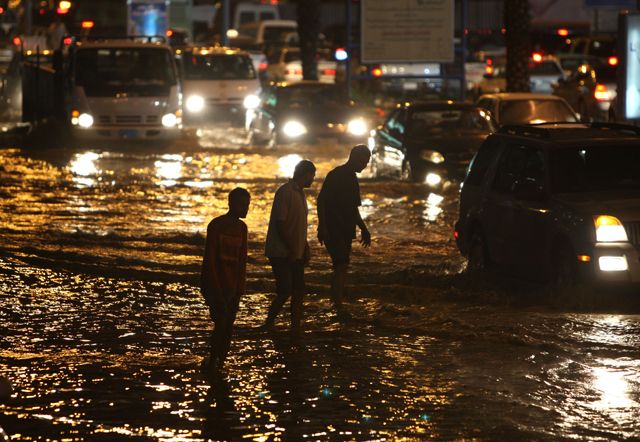Jeddah: The first day of Haj this year will remain a nightmare for most of the people living in the flood-ravaged southern and eastern districts of Jeddah.
Floating bodies of their loved ones, as well as their vehicles on the flooded streets and thoroughfares, are the nightmarish memories that still haunt several residents.
The death toll in the devastating rainfall and ensuing flash floods left at least 105 dead and several still missing. Thousands of people, both Saudis and foreign nationals, lost their homes and all their belongings.
The authorities have provided apartments to 2,186 people whose houses were destroyed or damaged in the flooding.
Search, rescue and recovery operations in the flood-hit areas continued yesterday as many government departments and voluntary organisations swung into action to rush relief aid to the flood victims.
The natural calamity was virtually a test for the preparedness of the city in coping with such a situation.
The Jeddah governorate and mayor's office pumped billions of riyals over the past years into upgrading the drainage system and demolishing dilapidated buildings in the region's undeveloped districts.
Ineffective
However, the heavy rainfall and the flash floods proved how ineffective the drainage network in the flood-stricken districts of the city was.
Waleed Al Omar, a Saudi journalist, said it was ironical that the Jeddah Municipality, which recently announced a two billion riyal (Dh1.9 billion) proposal to dispose of rainwater, found itself submerged in utter confusion and struggling to tackle the terrible situation following the calamity that marred the Eid festivities of the city dwellers.
Waleed drew attention to the public admission of Jeddah Mayor Adel Faqeeh about the inadequacies of the rainwater drainage network in Jeddah.
The mayor noted that Wednesday's rainfall was four times more than the capacity of the city's drainage network. He also pointed out the problems related to flash floods coming from the valleys.
Many people have also made illegal incursions into the drainage system to clear floodwaters. This had changed the direction of floodwater from the valleys to the city.
According to the mayor, about 70 per cent of the area in Jeddah is not covered by the drainage network and the mayor's office needs at least three billion riyals to upgrade rainwater drainage projects for the entire city.
"This statement contradicts a statement made by Ahmad Banafie, director of projects at the municipality, two years ago. He had said then that the municipality has been implementing several rainwater drainage projects [that cost] a total of two billion riyals, and that by these projects, the entire city would come under the drainage system," Waleed said.
Worst hit
The worst hit areas include Haramain Highway, and the road to Misk Lake where sewage tankers dump their cargo, causing a headache for the entire city and posing a grave danger to the environment.
Al Quwaiza, located just east of the Jeddah-Makkah expressway, is the worst hit district in the flood. Several people in the district lost their family members and friends in the calamity. The flashflood turned their Eid festivities into tragedy.
At least 30 districts were badly affected by the floods, mostly in south and east Jeddah.
Efforts to mitigate the suffering of the people by removing debris and assessing the damage are progressing in the flood-stricken districts.
As per the directives of King Abdullah Bin Abdul Aziz, Jeddah Governor Prince Mesha'al Bin Majid has instructed a committee of the Ministry of Finance to pay compensation to the victims at the weekly rate of 2,400 riyals for a family of more than two members.
The Saudi armed forces, currently engaged in a battle to drive out Al Houthi infiltrators on the southern border regions of Jizan, are also taking part in the search and rescue operation, together with the National Guard and Civil Defence forces in the flood-hit areas, especially Quwaiza in Jeddah.
















